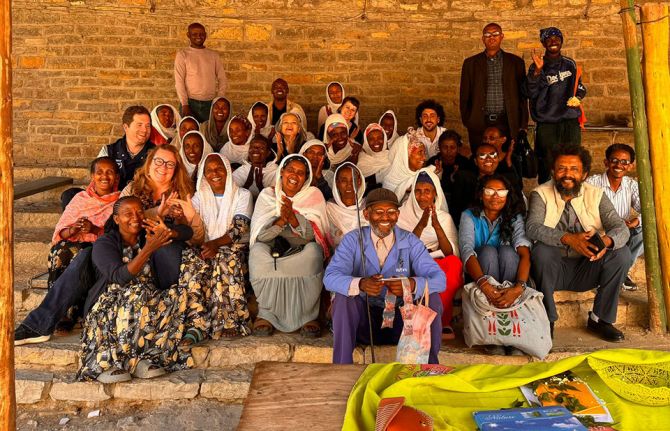
Feature Story
Food by Prescription: A Landscape paper from GAIN
16 November 2009
16 November 2009 16 November 2009
The World Summit on Food Security opens 16 November in Rome. In many parts of the world, lack of food security and poor nutrition are worsening the effects of the HIV epidemic.
Although HIV testing is increasingly available and efforts to support the nutritional needs of people living with HIV have intensified appreciably, antiretroviral therapy (ART) service providers continue to report large numbers of clients presenting with advanced disease and acute malnutrition. In some ART programmes, as many as 33 percent of all first-visit clients are unable to walk into the clinic without assistance, correlating with high rates of mortality in the first 90 days of treatment. In response, there has been a rapid proliferation of Food by Prescription (FBP) programmes, designed to ensure efficient and effective nutrition care and rehabilitation for people enrolled in HIV care and treatment programmes.
This paper from the Global Alliance for Improved Nutrition (GAIN) provides an overview of current thinking on modes of delivery and the salient issues surrounding FBP programme implementation. Its purpose is to document current thinking and experience, and identify areas of convergence and divergence. This will provide a starting point for future consultations where key issues can be elaborated and prioritized, and a plan for future action developed. Given the dearth of literature on FBP, information for this report was gathered primarily through semi-structured interviews with key informants from governments, civil society organizations, technical assistance agencies, donors and beneficiary groups.
This document reveals that, in less than a decade, a wide variety of creative FBP mechanisms and designs have emerged, catering to one or more of three core objectives. The primary emphasis of FBP programmes is on the nutritional rehabilitation and/or nutrition support of the patient to improve well-being and treatment outcomes. However, many FBP programmes have expanded this mandate to include provision of social safety nets to support treatment adherence and protect household integrity. Moreover, several FBP programmes have begun to support livelihood activities with the aim of encouraging a productive recovery and sustaining adherence. Programme designs are highly contextualized: some focus on one or two of these objectives while others aim for a comprehensive approach through partnerships and referral networks. Some programmes operate from a clinical base while others operate from an established foothold in the community, while still others have formed strategic linkages which span home, community and clinical settings.
Among all those interviewed, there is a sense of urgency driving the rapid rollout of this programming and an acknowledgement that there is much to learn about how to do it well. There is (at this point) no consensus about the optimal location of FBP programmes. There is general agreement on the use of anthropometric criteria for programme entry, but less agreement on discharge criteria. There are several different commodity options in use, with no evidence base to guide decision-making. In many settings, there is a need to more clearly differentiate between client-level nutritional rehabilitation and household-level food insecurity. There is a call for guidance and harmonization of objectives, standards and protocols.
This document was constructed according to themes, which were identified early in the process.
These included potential for integration and standardization; allocation of resources; human resource requirements and challenges; commodity management; wraparound services; monitoring and evaluation; the beneficiary perspective and the long-term outlook. The report closes with a summary of common issues and a preliminary list of issues for follow-up
Food by Prescription: A Landscape paper from GAIN
Cosponsors:
External links:
Global Alliance for Improved Nutrition (GAIN)
World Summit on Food Security
Publications:
Food by Prescription: A Landscape Paper (pdf, 1.59 Mb.)



